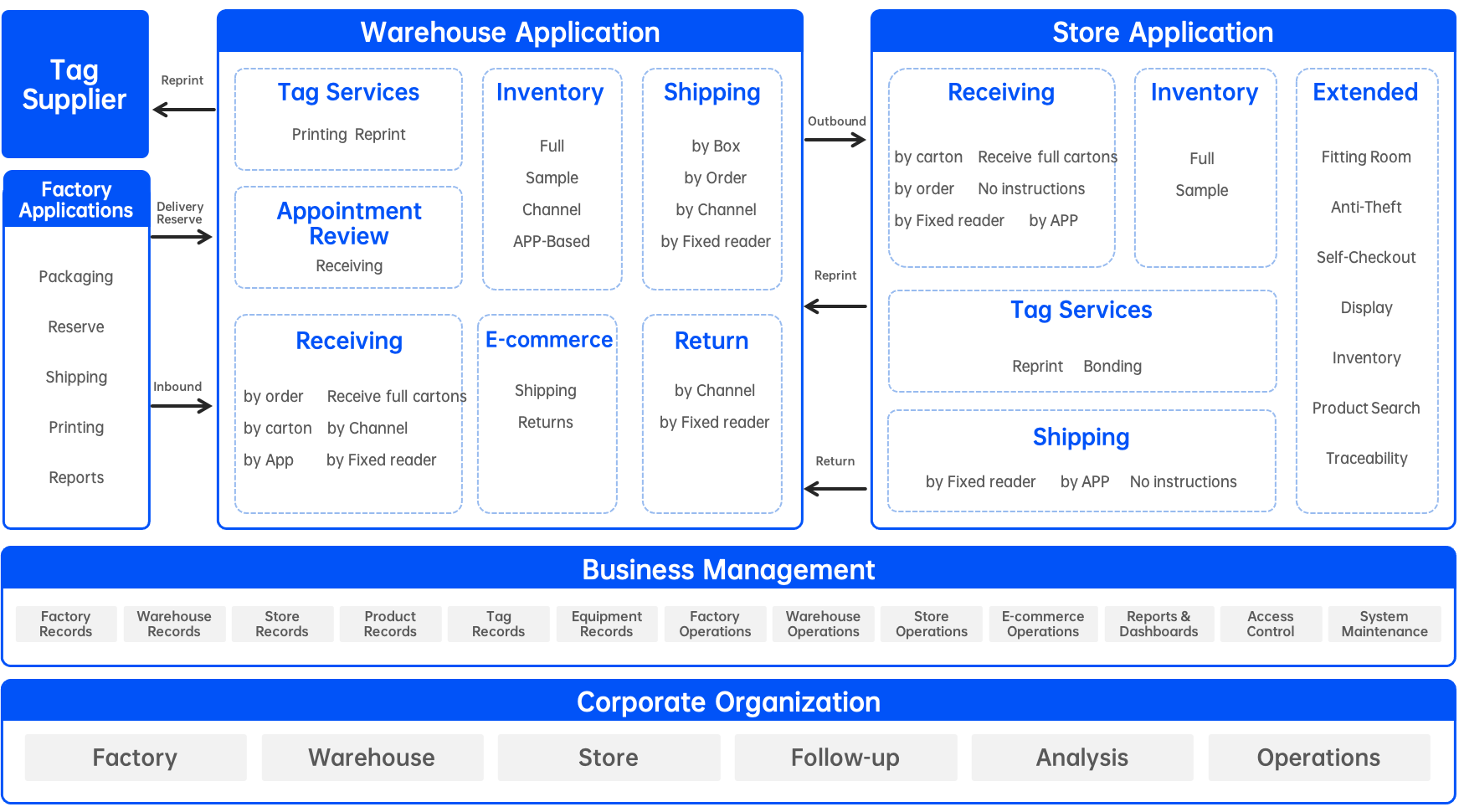Business Challenges
Massive SKUs
Increasingly Complex Inventory Management
Information Gaps
Manual Operations Reduce Efficiency
Data Lag
Lack of End-to-End Data Collaboration
Counterfeiting
Eroding Brand Trust
Massive SKUs Increasingly Complex Inventory Management
The challenge of managing massive SKUs has become a core pain point. To meet diverse market demands, brands continuously expand product categories, leading to a surge in inventory complexity. Excess stock ties up capital, while stockouts result in missed sales opportunities. Traditional management methods struggle to balance accuracy and efficiency.
Information Gaps Manual Operations Reduce Efficiency
Reliance on manual operations due to information gaps severely limits operational effectiveness. From production to warehousing and retail, supply chain processes still depend on manual barcode scanning or data entry via spreadsheets, which is time-consuming, labor-intensive, and prone to errors, slowing down supply chain responsiveness.
Data Lag Lack of End-to-End Data Collaboration
The absence of data synergy hinders decision-making. Siloed data across brand systems is common, making it difficult to synchronize sales, inventory, and production data in real time. Without integrated end-to-end data, brands cannot accurately forecast demand or optimize resource allocation.
Counterfeiting Eroding Brand Trust
Counterfeiting undermines brand credibility. Fake products flood online channels, harming consumer rights and damaging brand reputation and market competitiveness. Counterfeits not only hurt sales of genuine products but also erode long-established customer loyalty.
Solutions
Unique Product Identity & Traceability
Link RFID tags to product data for accuracy and traceability.

End-to-End Data Infrastructure
Deploy RFID devices across production, warehousing, and retail for seamless coverage.

Smart Data Integration
Develop RFID systems for tag, warehouse, and store management, integrated with existing platforms.


Value Delivered
Factory:Data-driven workflows reduce stockouts and overstock.
Warehouse:Streamline inventory checks and reduce manual work.
Store: Faster operations save time and labor.

Omnichannel:Unify online and offline sales.
Supply Chain:Agile response to market changes.
D2C:Build trust through product traceability.

Consumer Behavior: Analyze RFID data for preferences.
AI Decisions:Enhance precision in planning.
Trend Leadership:Innovate for unique customer experiences.
















